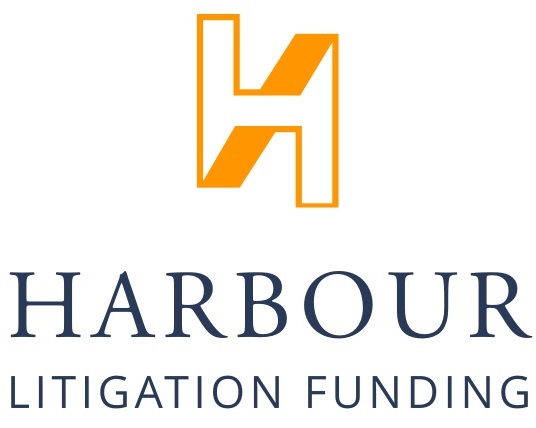5 November, 2016
For the first time, the Full Court of the Federal Court of Australia has made a common fund order, which entitles a litigation funder to be paid a portion of all class members’ damages in an open class action, regardless of whether they have signed a funding agreement. Stephen O’Dowd, Senior Director of Litigation Funding, reviews the potential impact of the Court’s decision in Money Max Int Pty Ltd (Trustee) v QBE Insurance Group Limited [2016].
He says:
This is a very significant decision, although its effect on the litigation funding landscape for class actions in Australia remains uncertain. In order to protect class member’s interests, the Court has seemingly placed a high price on the potential benefits a funder can receive from a common fund order.
Background
The majority of funded class actions in Australia have been “closed class”, where claimants “opt in” to the proceedings by entering into funding agreements. This process of signing up claimants – commonly referred to as the “book build” – can be time consuming and expensive. However, until Money Max, the book build remained the most effective way of managing the potential conflict that arises between funded and unfunded class members – the latter group typically perceived as enjoying a “free ride” at the expense of the former group.
The case and the Court’s decision
In the present case, Money Max’s lawyers, Maurice Blackburn, followed the standard book build approach. Class members were invited to enter into funding agreements, pursuant to which the funder would be entitled, on success, to a return of legal costs paid plus a commission of between 32.5% and 35% of the proceeds.
However, the proceedings were open rather than closed class, and after approximately 25% of class members had entered into funding agreements, Money Max applied for a common fund order. The order, if granted, would apply the litigation funding terms to all remaining class members who had not yet signed a funding agreement. As part of the common fund application, the funder proposed a reduction in its commission to 30%.
Money Max’s application was hotly contested by the defendant, QBE, on the principal ground that the common fund order would lead to a substantial and unjustified increase in the commission paid to the funder. However, the Court determined that a common fund order would benefit the class members, subject to the following key safeguards:
The funder’s commission would not be approved at this early stage, when the prospect of any settlement and the size of any common fund was uncertain. Instead, the funder’s commission would be determined by the Court at the time of settlement or judgment, at a rate considered by the Court to be reasonable and proportionate to the risks taken by the funder. The Court suggested that a return to the funder of AUD$100m on a hypothetical AUD$400m settlement might be regarded as excessive.
The amount of commission payable to the funder from the common fund would be capped, in that it could not exceed the amount that would have been payable if a common fund order had not been made.
The Court highlighted some expected benefits for future cases by taking the common fund approach, such as promoting access to justice by facilitating open class proceedings, and limiting competing claims backed by different funders.
And, recognising the likely concerns of funders about uncertainty in relation to their charges, the Court pointed to developing jurisprudence in this area and the wider benefits of charges that are commercially realistic rather than excessive or disproportionate.
Practical considerations for funders
For funders, the main benefit to be gained from securing an early common fund order is a reduction in the costs of the book build. However, the following issues may require careful consideration before a common fund application is funded:
Contractual certainty is extremely important to a funder, and a decision to sacrifice certainty is unlikely to be a straightforward one. In Money Max, the Court gave the funder the option of continuing under its existing funding agreements, rather than accepting the common fund terms.
The costs saved in the book build process may be offset by costs incurred in applying for a common fund order, especially if a favourable order becomes the subject of an appeal.
Through the book build, class members can provide important claim-related information at an early stage of the dispute (often before proceedings are commenced). This information can be valuable in assessing the merits and value of an action.
Conclusion
Some commentators are already arguing that the Money Max decision, unless it is overturned by the High Court, will lead to a flood of poorly assessed class actions being backed by funders.
We very much doubt this will happen.
Litigation funding is a high-risk endeavour. Class actions in Australia require a significant financial commitment, often over several years, and results are unpredictable even in apparently strong claims. A poorly assessed claim is more likely to fail, leading to a funder writing off its investment and being liable for the defendant’s costs.
The floodgates argument assumes that the take up for common fund applications will be high. This remains to be seen. From a funder’s perspective, assessing the pros and cons of a common fund does not appear straightforward.
What is clear is that Money Max is a further step along the path to increased judicial supervision of funding arrangements.
And as for what comes next? An appeal to the Australian High Court is possible. But assuming the decision holds, all eyes will be upon the first Court-determined funding charges, and the basis for the Court setting them.
For further information, please contact:
Stephen O’Dowd, Harbour
stephen.odowd@harbourlf.com

.jpg)





